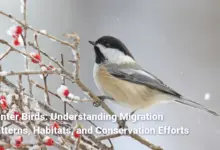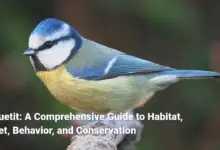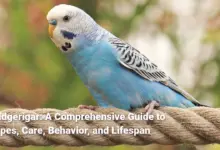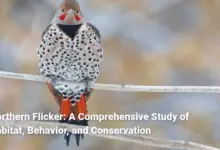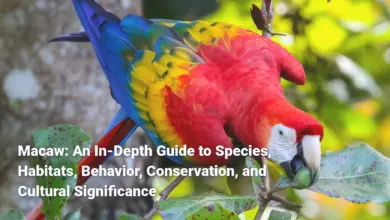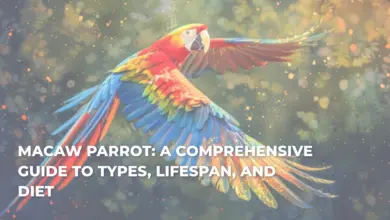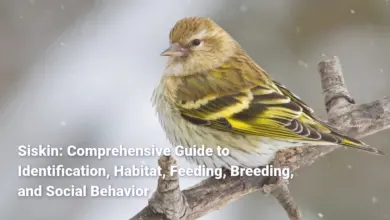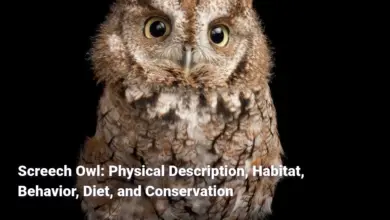Parakeet Bird: A Comprehensive Guide to Types, Care, Behavior, Breeding, and Vocalization
A Complete Guide to Parakeet Birds: Types, Care, Behavior, Breeding, Vocalization, and Accessories
Parakeet Birds, often celebrated for their vibrant colors and charming personalities, have nestled their way into the hearts of bird lovers around the globe. These small to medium-sized parrots belong to the Psittacidae family and are renowned for their sociable nature and ability to mimic sounds. While they may be diminutive in size, their playful, affectionate, and curious dispositions make them excellent companions for both novice bird owners and seasoned aviculturists alike. As interactive beings, parakeets thrive on social interaction, making them a joy for families and individuals who enjoy engaging with pets. Originating from various environments, these versatile birds have adapted to live in captivity, displaying an intriguing array of characteristics that can vary significantly between species.
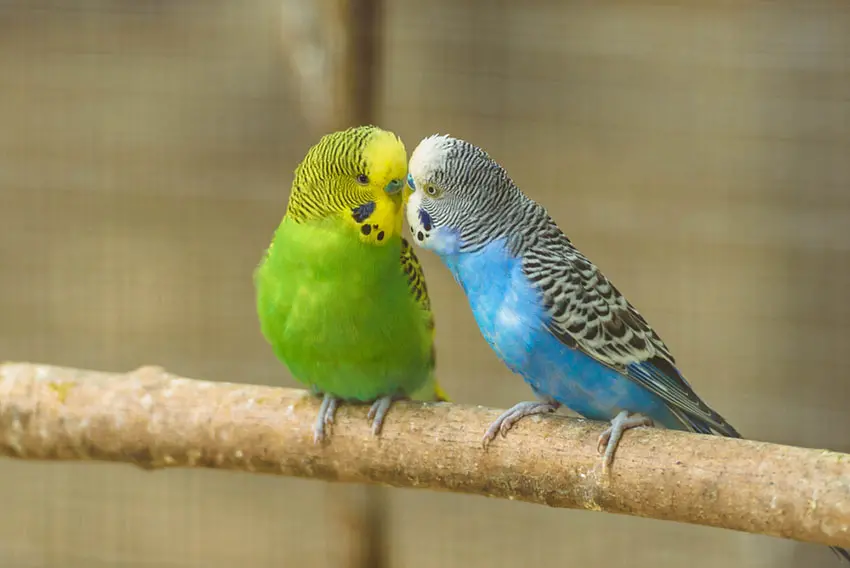
An essential aspect of caring for parakeets includes understanding their unique needs. Knowing how to provide ideal habitats, proper nutrition, and medical care can lead to a thriving pet. Whether you are drawn to the cheerful chirps of a popular budgerigar or intrigued by a rare species, each parakeet offers a unique experience. This article delves into the fascinating world of parakeets, focusing on their types, care, behavior, breeding and fun facts that make these birds such an enthralling choice as pets.
Types of Parakeet Birds
When contemplating the types of parakeets, there is a rich variety to consider each bringing its unique personality, appearance, and care requirements to the table. Imagine a vibrant spectrum of colors and sizes, akin to an artist’s palette filled with both familiar and exotic shades. For instance, the most recognized among parakeets is the budgerigar, or budgie, recognized for its cheerful nature and ability to mimic human speech. These birds are like small, feathered clowns, lighthearted and playful, blossoming in the presence of their caregivers.
In contrast, the Indian Ringneck Parakeet, often referred to as the rose-ringed parakeet, adds a touch of elegance to the ensemble with its striking plumage and charming long tail. An intricate dance of social interactions defines the personality of the Quaker parakeet, known for its talkative demeanor like a lively chitchatter at a coffee shop, always eager for conversation.
Here’s a closer look at some of the most popular types of parakeets, highlighting their defining characteristics and personalities:
| Type of Parakeet | Description | Lifespan | Temperament |
|---|---|---|---|
| Budgerigar (Budgie) | Small, vibrant colors, social and playful | 7 to 15 years | Intelligent, friendly |
| Indian Ringneck Parakeet | Bright colors, long tails, intelligent | 25 years | Independent, affectionate |
| Lovebird | Small, affectionate, forms strong pairs | 10 to 15 years | Playful, social |
| Quaker Parakeet (Monk) | Bright green, sociable and intelligent | 15 to 20 years | Talkative, playful |
| Lineolated Parakeet | Gentle demeanor, subtle colors | 10 to 20 years | Quiet, affectionate |
| Alexandrine Parakeet | Larger species, vibrant colors, playful | Up to 40 years | Affectionate, vocal |
Each parakeet has its own charm and care needs, making the choice of which to adopt akin to picking a favorite flower from a garden full of unique blooms. Understanding these differences can significantly enhance the relationship between an owner and their feathered companion.
Popular Pet Parakeet Birds
Popular pet Parakeet Birds, such as the budgerigar, quaker parakeet, and lovebirds, capture the attention of avian enthusiasts with their remarkable traits and animations. Budgerigars, often simply referred to as budgies, belong to Australia and are characterized by their cheerful songs and vibrant plumage. They thrive on interaction and socialization, making them excellent for first-time bird owners. With a lifespan of 7 to 15 years, budgies come in an array of colors like green, yellow, and blue, offering a visual delight to bird aficionados. Their inquisitive nature makes them bold explorers, and they often enjoy playing with toys and engaging in playful antics.
Another charming breed is the quaker parakeet, also known as the monk parakeet. These small, lively birds are recognized for their bright green color and sociable personalities. A quaker’s playful antics are reminiscent of a little comedian, as they often exhibit entertaining behaviors that keep their owners amused. With a lifespan of 15 to 20 years, quakers require plenty of interaction and mental stimulation to keep them happy. They are known for their remarkable ability to mimic speech and are often adept at learning new words and phrases, adding to their appeal as pets.
Lovebirds, intrinsically social creatures, are often kept in pairs to foster their natural relationships. Known for their affectionate and energetic behavior, these charming companions provide a delightful source of entertainment. Their lifespans range from 10 to 15 years and they come in various colors, each with captivating traits and captivating personalities. Lovebirds thrive in dynamic environments where they can explore and interact with their partners, whether avian or human.
In summary, popular pet Parakeet Birds not only offer visual appeal with their colors but also bring rich personalities and delightful companionship into people’s lives. By selecting a species that suits their lifestyle, owners can revel in the joy and wonder these feathered friends provide.
Wild Parakeet Bird Species
Wild parakeet species are a fascinating group of birds residing in diverse habitats across the globe. Like an orchestra, each species contributes its unique sound and rhythm to the rich tapestry of avian biodiversity. The budgerigar is one of the most commonly recognized wild parakeets and is native to Australia. In the wild, budgerigars soar across the expansive Outback in flocks, adapting to varying environmental conditions, while impressively executing acrobatic aerial maneuvers. These social birds thrive in large groups, relying on one another for safety and engaging in communal feeding.
The Quaker parakeet, or monk parakeet, is another captivating wild species. Originally found in areas of South America, these bright green birds are renowned for their distinctive nesting habits, building large, communal nests in trees that resemble miniature cities. Incorporating their natural instincts, they exhibit clever foraging techniques that allow them to access a wide variety of food sources. Their impressive sociability and adaptability have enabled them to establish feral populations in various urban areas around the world.
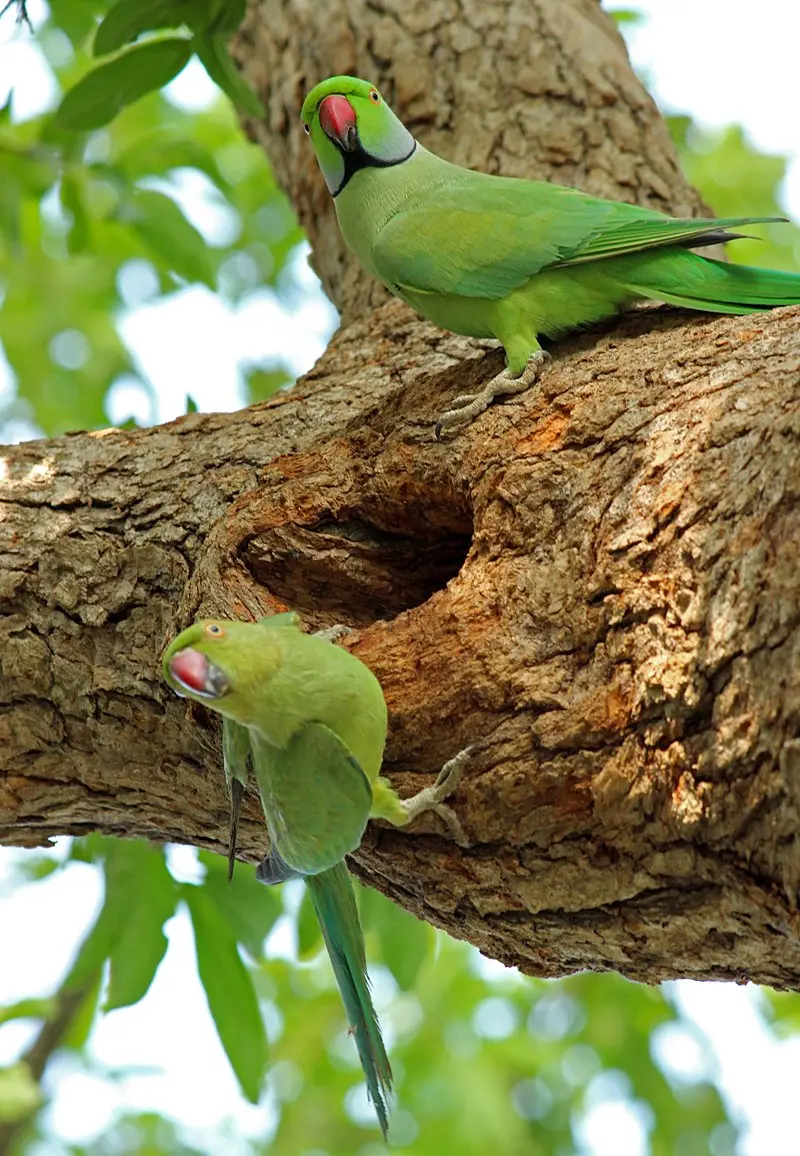
The Indian Ringneck Parakeet boasts vibrant colors and is recognized for its distinctive ring around the male’s neck. These Parakeet Birds can be found in the wild across various regions in India, demonstrating remarkable intelligence and vocal abilities. Natural habitats for Indian Ringnecks include forests and woodlands, where they interact in flocks and contribute to seed dispersal. Their capacity for vocalization allows them to communicate meaningfully within their groups.
Here’s an overview of key wild parakeet species:
| Wild Parakeet Species | Habitat | Lifespan | Key Characteristics |
|---|---|---|---|
| Budgerigar (Melopsittacus undulatus) | Australian Outback | 5-10 years | Social, playful, capable of mimicking |
| Quaker Parakeet (Myiopsitta monachus) | South America | 15-20 years | Nest-building habits, highly social |
| Indian Ringneck Parakeet (Psittacula krameri) | India | 20-30 years | Intelligent, capable of learning speech |
| Alexandrine Parakeet (Psittacula eupatria) | South Asia | 20-30 years | Beautiful coloration, vocal abilities |
The social dynamics of wild Parakeet Birds are complex and enriching, highlighting the importance of understanding their natural behaviors and environments. In conservation efforts, preserving these species and their habitats plays a vital role in maintaining ecological balance and appreciating the beauty of wildlife.
Rare Parakeet Varieties
Diving into the world of rare parakeet varieties showcases a vibrant and captivating spectrum of birds, each with unique colors and characteristics that stir the imagination. Just as artisans variably employ distinctive techniques to create stunning masterpieces, breeders and nature alike have produced intriguing parakeet mutations that captivate avian enthusiasts.
Among these rare varieties is the clearwing parakeet. This striking bird features lighter body coloring compared to its standard green variant, which makes it highly sought after among collectors and avian fanciers. The clearwing’s bright wing markings and unique visual appeal bring to mind a vividly painted canvas, distinct from traditional artwork.
Another fascinating rarity is the anthracite parakeet. This species exhibits an alluring near-black plumage due to a specific genetic mutation. First documented in 1998, the anthracite boasts a unique contrast between its deep coloration and bright cheek patches, making it a coveted specimen within the aviculture community.
The albino parakeet, identifiable by its all-white body and striking red eyes, is another example of rare mutations. While not overly common, entrepot like this adds to the excitement of breeding and collecting Parakeet Birds. The variation among each species and the physical attributes that make them stand out stir an emotional resonance and connection for enthusiasts.
Here’s a detailed comparison of notable rare parakeet varieties:
| Rare Parakeet Variety | Description | Lifespan | Attractiveness Level |
|---|---|---|---|
| Clearwing Parakeet | Lighter body color with vibrant wing markings | 10-20 years | High |
| Anthracite Parakeet | Near-black coloration with striking cheek patches | 15-25 years | Very High |
| Albino Parakeet | All-white body and red eyes | 10-15 years | Very Popular |
These rare varieties represent extraordinary examples of avian beauty and diversity. Their distinct characteristics not only captivate bird lovers but also draw attention to the importance of responsible breeding and conservation efforts to preserve these unique traits for future generations.
Parakeet Bird Care
Providing proper care for Parakeet Birds is akin to cultivating a delicate garden, where nurturing and attention lead to flourishing blooms. It encompasses various aspects, including housing, nutrition, social interaction, and health care. A well-maintained environment, coupled with love and respect, lays the foundation for a happy and thriving parakeet.
Cage Setup & Environment: The first step in providing effective care involves the selection of an appropriate cage that is spacious enough for your parakeet to move about and spread its wings. Ideally, the cage should be at least 24 inches long, 16 inches wide, and 16 inches high. The placement of the cage is equally important; it should be located in a well-lit area without drafts, providing a sense of security while still allowing the bird to engage with its surroundings.
Dietary Needs: The diet of a parakeet is a crucial aspect of its care. A balanced diet typically consists of high-quality pellets as the mainstay, supplemented with seeds, fresh fruits, and vegetables. This mix promotes optimal health and enhances their vibrant colors. Parakeets also benefit from pelleted diets specifically formulated for their nutritional needs.
Social Interaction: Parakeets are inherently social birds, and it is essential to nurture their need for companionship. Interacting with them daily through play, training, and even just talking helps alleviate boredom and anxiety. Keeping two parakeets together is often recommended to satisfy their social behaviors and instincts.
Health Monitoring: Regular health check-ups with an avian veterinarian are essential for early detection of potential issues. Signs of illness may include changes in appetite, lethargy, or behavioral shifts, which require immediate attention. Keeping a clean environment minimizes the risk of disease, corroborating health and longevity.
In summary, providing optimal care for Parakeet Birds involves creating an embracing environment, ensuring balanced nutrition, and investing time in social interaction and medical monitoring. These elements converge to foster a delightful and enriching life for your feathered friend.
Ideal Habitat for Parakeet Birds
Creating an ideal habitat for Parakeet Birds is fundamental to their well-being and overall happiness. Imagine a bird kingdom where every feature is tailored to cater to the needs of these vibrant creatures. Below are key elements to consider:
- Cage Size: Choose a cage that offers plenty of space for flying, climbing, and playing. A minimum of 24 inches long, 16 inches wide, and 16 inches high is ideal, though bigger is always better for their physical and mental health.
- Bar Spacing: Ensure that the spacing between the cage bars is no wider than half an inch to prevent the bird from escaping or getting trapped.
- Materials: Opt for cages made of safe, non-toxic materials. Stainless steel and powder-coated finishes are the best choices, while avoiding cages with peeling paint or sharp edges.
- Placement: Position the cage in a quiet, well-lit area, away from drafts and direct sunlight. This fosters a sense of security while allowing your parakeet to remain engaged in its environment.
- Interior Setup:
- Perches: Provide perches of different materials and thicknesses, allowing for foot exercise and comfort.
- Toys: Include a variety of toys to stimulate your parakeet mentally; safe options like ladders, swings, and chew toys promote active engagement.
- Food and Water Dishes: Ensure easy access to fresh food and water, keeping them clean and hygienic.
- Hygiene: Regularly clean the cage and change bedding to prevent bacterial growth or mold. Spot-clean daily to keep the environment fresh.
By customizing the habitat to suit the specific needs and behaviors of parakeets, owners create a nurturing environment that enhances the lives of these fascinating birds.
Feeding and Diet Requirements
Feeding and diet requirements for Parakeet Birds represent a crucial pillar of their overall care and longevity. Picture crafting a balanced diet for a small, feathered friend as a meticulous chef preparing a gourmet meal in which every ingredient must be thoughtfully selected to impart both nutrition and delight.
- Core Composition:
- Seeds: Approximately 50% of their diet should consist of seeds. A quality seed mix, featuring canary seed, millet, and limited sunflower seeds, ensures essential fatty acids.
- Fresh Fruits and Vegetables: Another 40% should come from a variety of fresh produce. Ideal choices range from leafy greens (kale, spinach) to carrots, apple, and broccoli, providing critical vitamins.
- Pellets: Including pellets can provide a balanced alternative to seed-based diets, ensuring adequate nutrition. Only about 10% should be allocated for other foods, which might include nuts or legumes.
- Nutritional Balance:
- Calcium Sources: Supplementing their diet with cuttlebone or mineral blocks promotes strong bones and healthy beaks.
- Fresh Water: Always ensure that freshwater is available and changed daily.
- Feeding Practices:
- Serve fresh food twice daily, aligning with their natural feeding habits while removing uneaten produce to prevent spoilage.
- Monitoring portion sizes is pivotal in preventing obesity, a risk with sedentary lifestyles.
- Health Tips:
- Regularly consult with a veterinarian to tailor dietary needs based on age, health, and activity levels.
- Be vigilant in recognizing signs of dietary deficiencies subpar feather quality or lethargy could indicate nutritional imbalances.
By observing the nuanced diet and feeding necessities of Parakeet Birds, caregivers not only enhance their health but also foster vibrant, lively companions that fill the home with joy and avian song.
Health Care Tips for Parakeet Birds
To ensure the health and well-being of Parakeet Birds, it is essential to implement various health care tips, akin to maintaining a thriving garden where regular care nurtures vibrant growth. Here are some key practices:
- Regular Vet Check-ups: Schedule annual visits to an avian veterinarian to monitor your parakeet’s overall health. A vet can identify potential issues early, enabling proactive intervention and preventing disease.
- Recognizing Signs of Illness: Familiarize yourself with common symptoms indicating health problems, such as sudden changes in appetite, lethargy, changes in droppings, or feather plucking. Addressing these symptoms promptly can be vital for their recovery.
- Maintaining Hygiene: A clean living environment is paramount in preventing the spread of diseases. Regularly clean the cage, including changing bedding, sanitizing food and water dishes, and providing fresh items to support a healthy living space.
- Mental Stimulation and Exercise: Provide plenty of toys and engaging activities for your parakeet. Change toys regularly to keep them interested; interactive games foster mental well-being and help reduce boredom-related behaviors.
- Proper Socialization: Engage in daily interaction with your parakeet to strengthen your bond. Include supervised out-of-cage time, allowing for exploration and social among familiar surroundings.
- Nutritional Stability: Feed high-quality diets rich in essential nutrients, and avoid feeding harmful items such as chocolate, avocado, or caffeine. Monitor their food intake and adjust as needed based on activity level and age.
- Emergency Preparedness: Have a plan in place for emergencies. Knowing which veterinary clinics provide avian care ensures that you are ready in case of illness or injury.
These health care tips are crucial in ensuring the long and healthy life of your parakeet. By being attentive and proactive, owners can foster a nurturing environment that greatly enhances the quality of life for their avian companions.
Parakeet Behavior
Understanding parakeet behavior enriches the bond between the birds and their caregivers, much like deciphering an intricate language. Parakeet Birds are known for their sociable nature, displaying vibrant and engaging behaviors that reflect their emotional states. Here’s what to observe and appreciate about their behavior:
- Flocking Instincts: Parakeets are naturally inclined to form flocks in the wild, which provides benefits such as safety in numbers and social interaction. When captive, they thrive on companionship, so keeping multiple birds can mitigate feelings of loneliness and boredom.
- Vocalizations: Communication through various sounds is a dynamic feature of parakeets. Chirps, squawks, and whistles express joy, alarm, or curiosity. Observing the context in which these vocalizations occur can offer insights into your parakeet’s mood and needs.
- Affection and Bonding: Parakeets often show affection through preening and gentle nuzzling. They may develop strong bonds with their human caretakers, exhibiting trust and comfort in their presence, which fosters a sense of security.
- Signs of Stress or Boredom: Parakeets may exhibit signs of stress through excessive vocalization, feather plucking, or lethargy. Recognize these behaviors and take action by enriching their environment to alleviate discomfort or boredom.
- Exploratory Nature: Parakeets are inherently curious, often exploring their surroundings with keen interest. Providing a safe and stimulating environment with toys and perches encourages natural exploratory behavior.
Understanding parakeet behavior not only helps improve the care you provide but also enhances the quality of the relationship you share with your feathered friend. Nurturing their natural instincts ultimately leads to happier, healthier birds that fill your life with joy and companionship.
Social Behavior of Parakeet Birds
In the vibrant world of Parakeet Birds, social behavior is a cornerstone of their existence. Honoring and understanding this innate sociability is crucial for any caregiver aiming to foster a fulfilling environment for their feathered companions. Here are some insights into the delightful social dynamics of Parakeet Birds:
- Flocking Nature: Parakeets are naturally social birds that thrive when housed in groups. In their wild habitats, they form large flocks that offer protection from predators and opportunities for social interaction. By mimicking this communal lifestyle in captivity, owners can help reduce feelings of loneliness and provide essential companionship.
- Communication Styles: Parakeets possess a rich repertoire of vocalizations that serve various social functions. From chirps and whistles to melodic songs, vocal communication enables them to establish connections with their flock. Owners can also communicate with their parakeets through soft tones and mimicry, further strengthening their bond.
- Bonding Preferences: When keeping parakeets, individuals often establish strong relationships with one another. They engage in social grooming and may even share food with their partners. Observing your parakeets developing these affectionate behaviors can evoke a sense of warmth, as they nurture their bonds.
- Signs of Loneliness: A parakeet kept alone may exhibit signs of depression or boredom, including decreased activity levels and excessive vocalization. Consider keeping at least two parakeets together, as this companionship provides mental stimulation and fosters natural behaviors.
- Interactive Play: Parakeets are playful creatures, delights in their toys, and engaging in interactive play with their human caregivers. Providing a variety of toys and encouraging out-of-cage time cultivates a stimulating environment conducive to healthy social behavior.
In conclusion, understanding the social behavior of parakeets enriches the overall experience of bird ownership. By providing companionship, engaging in meaningful interactions, and creating dynamic environments, owners can foster a thriving and fulfilling life for their feathered friends.
Training Tips for Parakeet Birds
Training Parakeet Birds can be a rewarding journey, akin to nurturing a blooming flower from seed to bloom. With patience, understanding, and positive reinforcement, caregivers can successfully teach their parakeets essential commands and behaviors. Here are some effective training tips:
- Creating a Positive Environment: Establish a comfortable training space free of distractions. A quiet, well-lit area allows your parakeet to feel secure and focused during training sessions.
- Utilizing Positive Reinforcement: Engage your parakeet’s interest through treats and praise. Whenever your bird successfully follows a command or exhibits desired behavior, reward them immediately with a favorite treat. This reinforces positive behavior and encourages repetition.
- Setting Short Sessions: Given their natural curiosity, parakeets have short attention spans. Limit training sessions to 5-10 minutes each, but repeat them multiple times a day to maintain interest and enthusiasm. Consistency is key to effective learning.
- Starting with Basic Commands: Introduce simple commands like “step up” or “come here.” Utilize a perch to familiarize your bird with stepping up, rewarding them with an immediate treat upon compliance.
- Teaching Vocalization: Many parakeets are adept mimickers. To teach them to talk, repeat short phrases regularly. Use positive reinforcement when they attempt to mimic the sounds. The key is repetition and praise.
- Building Trust and Rapport: Be patient and gentle, allowing your parakeet to acclimate to your presence. Gradually approach them and earn their trust through calm interactions. This bond will enhance their training experience.
Common Behavioral Issues
As with any pet, Parakeet Birds may display certain behavioral problems. These issues can often stem from stress, boredom, or unmet environmental needs. Here are some common behavioral issues and strategies to address them:
- Biting: A parakeet may bite due to fear, territoriality, or overstimulation. Gently approach them without sudden movements, allowing them time to adjust. Gradually build trust over time to help reduce fear responses.
- Excessive Squawking: This behavior could indicate boredom, loneliness, or the need for attention. Ensure that your parakeet has ample enrichment and toys, and consider increasing your interaction time.
- Feather Plucking: If a parakeet begins plucking its feathers, it may signal stress or an underlying health issue. Ensure their environment is stimulating and consult an avian vet if this behavior persists.
- Picky Eating: Encourage your parakeet to try new foods by incorporating them gradually alongside their favorite items. Offer a variety of fruits, vegetables, and pellets to cultivate openness to diverse diets.
- Backed into a Corner: If your parakeet feels cornered, they may display aggression. Facilitate their space by allowing access to various perches and toys, avoiding isolation from the rest of the environment.
By addressing behavioral issues with patience and understanding, owners can enhance their parakeets’ overall quality of life transforming potential challenges into opportunities for bonding and growth.
Parakeet Breeding
Breeding Parakeet Birds presents a fascinating opportunity to witness the life cycle of these captivating birds. However, it requires dedicated understanding and commitment to ensure the well-being of both parents and chicks. Here are essential insights into parakeet breeding:
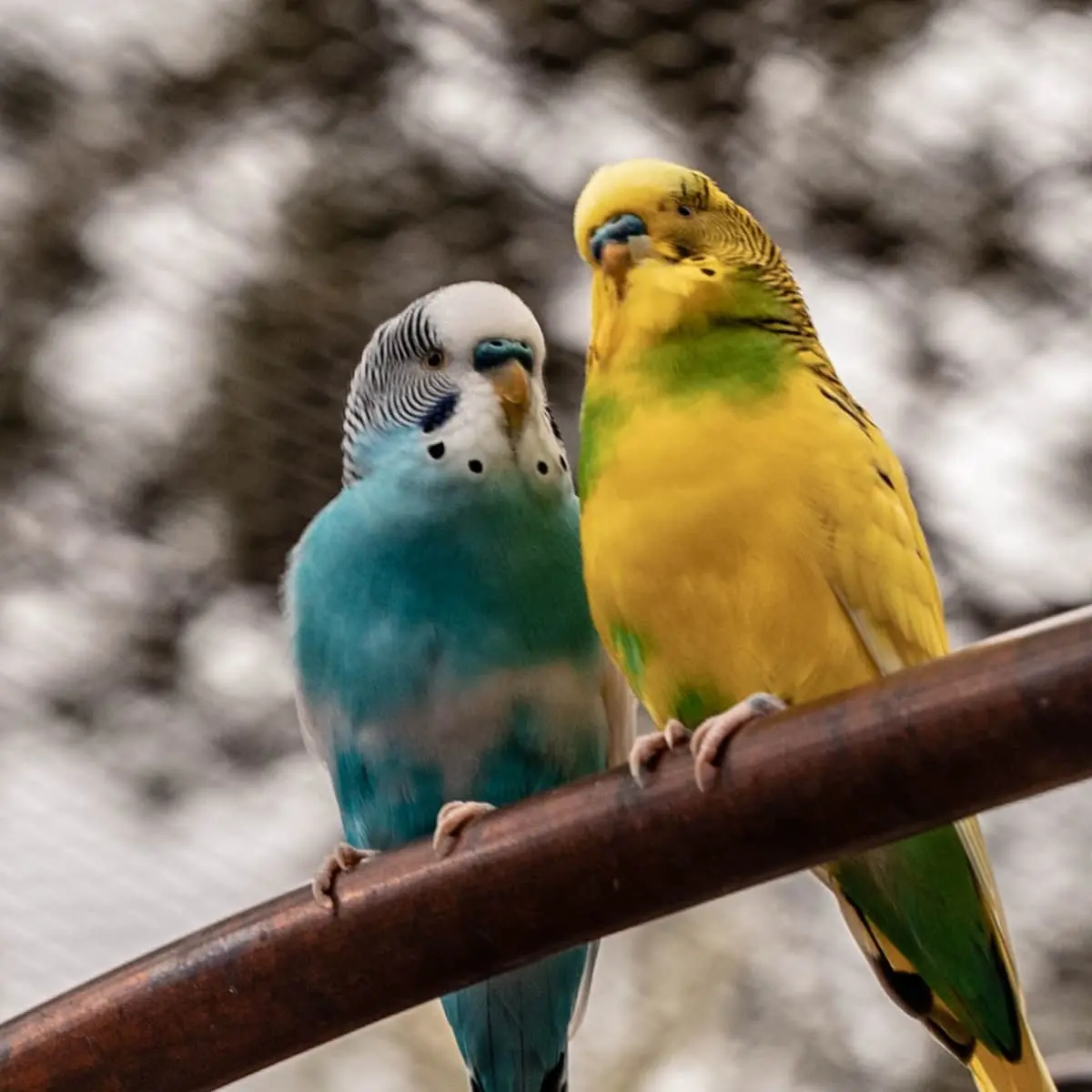
- Choosing a Breeding Pair: Selecting compatible birds is vital for successful breeding. Look for visible signs of a male and female parakeet, with males often displaying a bright blue cere while females may have a brown, crusty cere once matured.
- Age of Maturity: Parakeets reach maturity at differing ages, usually between 6 to 12 months. Aim to breed healthy pairs that are not too young, typically waiting until they are around 10 months old to minimize risks.
- Nesting and Cage Setup: Provide a breeding cage measuring at least 24 inches long, equipped with a nesting box filled with suitable materials like aspen shavings. The nesting box allows for laying eggs comfortably and safely.
- Breeding Process: Post-mating, the female will lay a clutch of 3 to 7 eggs over several days, which will undergo an incubation period lasting around 18 to 21 days. Both parents typically share the responsibility of incubating the eggs.
- Caring for Hatchlings: After hatching, chicks are reliant on their parents for warmth and food. They will usually remain in the nest for about 4 to 5 weeks before fledging and can slowly transition to solid foods during this period.
Egg Care and Incubation
The period surrounding egg care and incubation forms a delicate balance of nurturing and attention, akin to tending to fragile seedlings in a greenhouse. Here are some practices to ensure the health of the eggs and future chicks:
- Monitoring Temperature and Humidity: Maintaining optimal conditions in the nesting area is essential. An ideal temperature is around 99°F (37°C), and humidity should be kept moderately high to encourage proper development.
- Parental Role in Incubation: Both parents play an essential role in incubating the eggs. They typically share the responsibility, switching positions to warm the eggs and keep them safe from potential disturbances.
- Environmental Ease: Avoid disturbing the nesting area excessively; excessive handling can stress the parents and disrupt the incubation process. Allowing natural behaviors to unfold enhances success rates.
- Post-Hatching Care: Once hatchlings emerge, parental feeding involves regurgitation of food. Monitoring the growth of chicks is essential, and intervention may be needed in cases of inadequate parental care.
By providing careful oversight during this sensitive time, birds will be equipped for successful breeding and nurturing of healthy offspring, paving the way for the continuation of future generations.
Raising Parakeet Chicks
Raising parakeet chicks can be a deeply rewarding experience, akin to nurturing newborns, where diligence and attention interlace with compassion. Here are the critical elements of caring for young Parakeet Birds:
- Post-Hatching Responsibilities: After the eggs hatch, ensure that both parents are caring for the chicks properly. They will feed their young through regurgitated food, providing essential nutrients for growth and development.
- Monitoring Growth and Health: Observe the chicks for signs of growth and well-being. Healthy chicks should gain weight consistently and display active behavior. Any signs of lethargy or refusal to eat should prompt a visit to an avian vet for further evaluation.
- Fostering Independence: At around 4 to 5 weeks old, the chicks may begin to venture outside of the nest box. At this stage, begin introducing them gently to solid foods, including grains, fresh fruits, and vegetables, to help them transition from a purely liquid diet.
- Weaning Process: The weaning stage can take two to four weeks, during which parents continue to provide care while encouraging their chicks to eat independently. Ensure that they always have access to fresh water and nutritious food.
- Social Training: Once weaned, engage with the chicks regularly to socialize and acclimate them to human interaction. This early bonding process is essential for fostering a friendly and loving pet.
By paying close attention to the needs of parakeet chicks and providing proper care, owners can enjoy the rewards of observing them grow into vibrant, active adults, ultimately expanding their feathered family.
Parakeet Birds and Their Vocalization
Parakeet Birds are undeniably vocal creatures, using sounds to express their emotions, communicate needs, and engage with their environment. Understanding these vocalizations can significantly enhance the bond between owner and bird. Here’s a closer look at their vocal behavior:
- Common Sounds: Parakeets produce an array of sounds, including chirps, squawks, and trills, each serving unique purposes. Chirping often conveys happiness, while squawking can signal distress or a demand for attention.
- Learning to Mimic: Parakeets are capable mimics and often imitate sounds from their environment, including human speech. To encourage this, repeat words clearly and consistently, rewarding attempts at mimicry with treats.
- Social Dynamics: In the wild, vocalizations are vital for maintaining flock cohesion. By engaging in daily interactions and conversation, owners can help develop a parakeet’s ability to mimic sounds human companions make.
- Understanding Context: Observing the context of vocalizations is crucial. When parakeets chirp enthusiastically during play, it indicates contentment. However, excessively loud squawking might suggest boredom or discomfort.
In summary, understanding the intricate language of Parakeet Birds enriches the relationship between caregiver and companion. By recognizing the meanings behind various vocalizations, owners can respond to their feathered friends’ needs better, creating a harmonious living environment.
Common Sounds Made by Parakeet Birds
Parakeet Birds produce several distinct vocalizations that reveal their emotional states and needs. Just as different notes in a melody create harmonies, these sounds form a rich tapestry of communication. Below are some of the common sounds made by parakeets:
- Chirping: Often associated with happiness, chirping is a melodic sound that parakeets produce when they feel comfortable and safe in their environment. Observing this sound during play indicates contentment and joy.
- Squawking: A loud and abrupt squawk may signify fear, annoyance, or a call for attention. This sound often occurs in response to sudden movements or environmental disturbances, signaling a need for reassurance.
- Chattering: Quick, soft chattering can reflect curiosity or excitement in parakeets. They often engage in chatter when exploring new toys or interacting with their human companions.
- Singing: Parakeets produce beautiful melodic songs when they’re feeling particularly joyful or relaxed. Singing can be stimulated by playing music or singing in their presence, prompting them to join in the chorus.
- Barking Sounds: Some parakeets imitate barking sounds, often as they learn from their environment, adding uniqueness to their vocal repertoire. They may incorporate everyday sounds into their vocalizations.
By paying close attention to these specific sounds, parakeet owners can cultivate a deeper understanding of their birds’ emotional needs and enrich daily interactions, leading to a more fulfilling bond.
Understanding Parakeet Communication
Parakeet Birds are not just beautiful pets; they are communicative creatures that employ a variety of vocal and visual cues to express their emotions and needs. Understanding how they communicate can significantly enhance your relationship with these charming birds.
- Vocal Communication: Parakeets use a range of vocalizations to express happiness, fear, or curiosity. Chirps often indicate a positive mood, while loud squawks may signify distress. Listening carefully to their sounds allows owners to respond appropriately to their birds’ needs.
- Body Language: Beyond sounds, parakeets communicate through body language. For instance, fluffed feathers often signal contentment, while a drooping body may indicate illness or stress. Observing their body language helps caregivers gauge their emotional states.
- Learning and Mimicking: Parakeets have a remarkable ability to learn and mimic sounds, including human speech. Talking to your parakeet regularly can encourage them to mimic phrases, creating a bond between owner and pet and fostering interactive communication.
- Social Interactions: Parakeets naturally thrive on social interactions, both with their fellow birds and humans. Engaging with them regularly not only builds trust but also stimulates their desire to communicate, fostering a more enriching environment.
In a nutshell, understanding the nuances of parakeet communication deepens the emotional connection between caregivers and these delightful birds. By recognizing both vocal and physical cues, owners can provide a supportive and engaging atmosphere for their feathered companions to thrive.
Parakeet Bird Fun Facts
Parakeet Birds are fascinating birds brimming with extraordinary traits and behaviors, making them a captivating choice for pet owners. Here are some fun facts that showcase the intriguing characteristics of these lively creatures:
- Vibrant Colors: Parakeets come in a dazzling array of colors, from the classic greens and yellows of the budgerigar to the vibrant blues, whites, and even rare mutations like albino and clearwing varieties. Their colorful plumage is a visual feast that adds charm to any home.
- Social Birds: Parakeets are highly social creatures that thrive on interaction with their fellow birds and human caregivers. Their playful antics and strong bonding abilities make them affectionate companions, often thriving best in pairs or small flocks.
- Vocal Mimics: Many parakeets possess impressive vocal abilities, capable of mimicking various sounds, including human speech. Some owners even report their birds learning a range of delightful phrases and tunes, enhancing the joy of ownership.
- Intelligent Creatures: Parakeets exhibit high levels of intelligence in problem-solving and learning through observation. With patience and engagement, they can learn tricks, navigate mazes, or even play games with their owners.
- Lifespan: While the average lifespan of parakeets ranges from 5 to 15 years, some individuals have lived beyond 20 years with proper care. The oldest documented budgie lived to be 29 years old, showcasing the potential for longevity in well-cared-for birds.
Understanding these fun and interesting traits adds depth to the experience of owning parakeets. Their vibrant personalities and striking appearances make them delightful companions that enliven any home with colorful energy and joyful chirps.
Interesting Traits of Parakeet Birds
Exploring the delightful traits of Parakeet Birds reveals a world filled with endearing quirks and remarkable characteristics that contribute to their charm. Here are some interesting aspects that define these captivating birds:
- Strong Flocking Instincts: Parakeets are naturally social creatures, a trait inherited from their wild ancestors. In captivity, they thrive better when kept in pairs or groups. Their flocking instincts create bonds that foster mental well-being and emotional health.
- Curiosity and Playfulness: The inquisitive nature of parakeets risks turning them into little adventurers. They love exploring their environment, engaging with toys, and trying to solve puzzles. Providing a stimulating environment rich in toys and activities keeps their minds sharp and spirits high.
- Color Variability: Parakeets exhibit a fascinating range of colors thanks to selective breeding. From the classic green and yellow budgerigar to various mutations in lovebirds and ringnecks, their color diversity is a feast for the eyes, captivating avian enthusiasts worldwide.
- Social Grooming: Parakeets engage in mutual preening, a behavior that strengthens social bonds and reflects their cooperative nature. They not only groom themselves but also help each other, demonstrating affection and trust.
- Intricate Vocalization: Their vocal repertoire is extensive, allowing them to express a wide range of emotions. Parakeets can produce everything from soft chirps to loud squawks, enabling caregivers to understand their moods. Their vocal abilities also enable them to learn new sounds and phrases, becoming delightful conversationalists.
By cherishing and appreciating these traits, owners can foster the most rewarding experiences with their parakeets, enriching their connections with these delightful creatures.
Lifespan of Various Parakeet Bird Species
Understanding the lifespan of different parakeet species can play a vital role in preparing owners for the long-term commitment that comes with bird ownership. Much like a tree’s growth rings tell the story of time, the lifespan of Parakeet Birds reflects their care and environment. Here’s a breakdown of the expected lifespans of various species:
| Parakeet Species | Average Lifespan | Maximum Lifespan | Remarks |
|---|---|---|---|
| Budgerigar (Budgie) | 7 to 15 years | Up to 20 years | Known for their sociable nature; requires social interaction. |
| Monk Parakeet (Quaker) | 15 to 20 years | 30 years | Highly social and known for building elaborate nests. |
| Indian Ringneck Parakeet | 15 to 30 years | 25-30 years | Intelligent and versatile; often friendly with humans. |
| Alexandrine Parakeet | 20 to 30 years | Up to 40 years | One of the largest parakeets with stunning plumage. |
| Lovebird | 10 to 15 years | Up to 20 years | Affectionate and forms strong bonds; best kept in pairs. |
By understanding these lifespans, potential owners can better appreciate the responsibilities associated with caring for parakeets. Proper care and a healthy environment can extend their lives, allowing for many joyful years filled with chirps and companionship.
Parakeet Accessories
Selecting appropriate accessories is essential for ensuring a comfortable and stimulating environment for parakeets. Like finely tuned instruments in an orchestra, these accessories harmonize to enhance the quality of life for your feathered friends. Here are some must-have accessories for parakeet cages:
- Perches: Providing a variety of perches in different shapes and sizes promotes foot health and gives them optimal opportunities for exercise. Some preferred materials include natural wood, rope, and cement perches, which cater to various needs while being safe.
- Toys: Engaging toys are crucial for mental stimulation. Incorporate a mix of foraging toys, chew toys, and interactive puzzles that can keep your parakeet entertained while also promoting natural behaviors.
- Food and Water Dishes: Sturdy, easy-to-clean dishes for food and water are indispensable. Ensure that they are appropriately sized for the birds and are placed at a comfortable height for easy access.
- Cuttlebone or Mineral Block: Providing a cuttlebone or mineral block is a natural way to keep their beaks trimmed and offers necessary calcium for healthy bone development.
- Nesting Materials: If you have breeding pairs, consider providing nesting materials like shredded paper or untreated wood shavings to ensure they feel secure while preparing for chicks.
Must-Have Toys for Parakeet Birds
Selecting toys for parakeets is essential to keep them active, engaged, and mentally stimulated. Here’s an overview of must-have toys specifically designed for these social birds:
| Toy Type | Description | Purpose |
|---|---|---|
| Foraging Toys | Toys that hide treats or seeds for the bird to find. | Encourage natural foraging behavior. |
| Chewing Toys | Made from natural fiber or wood, suitable for chewing. | Promote beak health and prevent boredom. |
| Swings and Ladders | Interactive climbing structures that allow for play and exercise. | Encourage physical activity and exploration. |
| Bell Toys | Toys that produce sounds when moved or played with. | Stimulate curiosity and encourage play. |
| Mirrors | Reflective surfaces that satisfy their social instincts. | Provide a sense of companionship. |
By providing a variety of toys, owners can create an enriching environment that fosters healthy behaviors and keeps their parakeets mentally engaged.
Essential Cage Accessories for Parakeet Birds
When assembling a parakeet cage, including essential accessories is crucial for enhancing the overall well-being of your feathered friend. Here’s a closer look at the indispensable additions to a parakeet cage:
- Natural Perches: Incorporating natural wood perches in various sizes and shapes will aid in maintaining foot health. Each perch should be made from bird-safe materials, allowing your parakeet to climb and explore comfortably.
- Enrichment Toys: Provide a mix of toys that stimulate your parakeet’s natural instincts. Consider foraging toys, bells, and climbing structures that engage their curiosity and promote physical activity.
- Food and Water Containers: Ensure that sturdy containers are appropriately sized for bird access. Keeping food and water separate also enhances cage hygiene.
- Cage Liners: Utilizing cage liners simplifies the cleaning process and helps maintain a low-stress environment for your parakeet. Choose absorbent liners that are easy to replace.
- Bathing Area: Offering a shallow dish or a bird bath encourages regular bathing, which aids in maintaining feather health and hygiene.
- Hideouts: For added security, provide small shelters or hideouts within the cage where your parakeet can retreat and feel safe.
By integrating these essential cage accessories, owners can cultivate the ideal environment that supports the physical and emotional health of their beloved Parakeet Birds, ensuring that they lead enriched, fulfilling lives.
In conclusion, Parakeet Birds offer rich opportunities for companionship and joy, filled with vibrant personalities and interactive behaviors. Understanding their unique needs and characteristics from the types of Parakeet Birds and their care requirements, to their fascinating behavior and social dynamics enables owners to provide an enriching environment where these delightful birds can flourish. Love, patience, and attention to detail in parakeet care lead to a nurturing relationship that brings endless joy to both feathered friends and their human companions.

